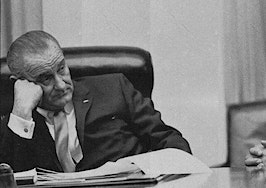In November, Newsday rocked the real estate industry to its core with a groundbreaking, three-year investigation that revealed widespread bias against consumers of color on Long Island.
The investigation, which included 100 agents at 12 of Long Island’s largest brokerages and 86 trained Fair Housing pair testers, revealed that black buyers were discriminated against 49 percent of the time, while Hispanic and Asian buyers were discriminated against 39 percent and 19 percent of the time, respectively.
Although industry members were shocked by the results, the Newsday investigative team revealed on the Inman Connect New York stage that the findings were in line with Long Island’s long history of racial segregation.
“We didn’t think Realtors were racist,” Newsday Deputy Editor Keith Herbert said. “What we knew was Long Island had a historical segregation pattern. We just wanted to know if the industry had any hand in continuing this pattern.”
Project Manager Arthur Browne said the team painstakingly planned their investigation, debated the most effective ways to gather information, and pulled in experts and data scientists to help them accurately analyze and fairly present the information revealed through hundreds of hours of video.

Arthur Browne
“This is the largest program in pair testing ever done by a media organization,” Browne said while noting his team took the challenge seriously. “We debated using video, but decided it was the most effective way to gain proof. It’s perfectly okay, and its allowed by state law.”
“But think about the era that we were in with all this fake news stuff,” added reporter Olivia Winslow. “ We needed proof of what was said.”
The videos revealed that agents would steer white testers toward white communities, while testers of color were steered toward more diverse areas. Browne recounted one conversation where an agent advised a white tester was advised to stay away from Long Island’s Freeport neighborhood due to the quality of schools, while black testers were told it was a good place to buy a home.
Furthermore, the videos revealed that testers of color were asked to provide an ID before viewing a home or were told they needed to be prequalified for a mortgage before the agent would offer further assistance.

Olivia Winslow
“There was a denial of equal service,” Winslow said. “Agents would often say [testers of color] needed to be prequalified for a mortgage [before showing a home].
The Newsday team acknowledged the criticism that agents in the investigation were unfairly assessed, but the team revealed that each agent and brokerage included was given the opportunity to view the footage and results before publication in November.
“We did talk to real estate agents,” Browne said of the two-month fact checking process. “Every single agent was informed of the findings in writing.”
Browne and Herbert even revealed that Douglas Elliman called in legal experts to review videos of agents and the subsequent findings. However, the team welcomed the challenge and even reconsidered the evaluation of a Douglas Elliman agent, who was removed from the report as an example of agent bias.
“They very aggressively challenged the findings,” Browne said. “But to this point, no one has sued.”
The Newsday team said the point of the investigation wasn’t to demonize real estate agents, but to instead reveal the power agents have in squashing segregation and improving the outcomes of their clients.
“Forty percent of the cases overall showed disparate treatment, which means 60 percent did not,” Browne highlighted.
“Agents need to know they are the gatekeepers,” Winslow followed. “They are the segregators,” she added, recounting a comment from one of the black pair testers. “[The investigation] speaks to the power that real estate agents have. It impacts the individual’s life and that individual’s children and the schools they go to.”

Keith Herbert
So, what’s the solution? The team said agents need more adequate and comprehensive Fair Housing training, better enforcement of the laws already in place, and more agents holding each other accountable for the service they provide.
“As a person of color, if I come into your business, I want my dollar to go as far as a white person’s would,” Herbert said as a final thought. “I would want to be able to get the best house in best neighborhood with the best school district, regardless of my race.”













